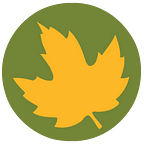Naturalists inspire people to connect with nature
Mike Greene, Education & Recreation Manager
Over the nearly 60-year history of naturalists working for the park district, starting with our first naturalist Bert Szabo, we have deployed diverse tactics to help park users understand and appreciate the full value of their parks.
Nature Centers: From Ranch to Underground
I have had the privilege of seeing the transformation of the park district firsthand since I was a child. During the 1960s, I was a regular park visitor to the newly opened Seiberling Nature Center. It had been a small farm that included a recently built ranch-style home. That home was converted to become the park district’s first nature center, which was filled with exhibits handmade by the naturalists of that era. Today, we have three centers with core exhibits designed and fabricated by specialty exhibit firms, although some exhibits are still hand-crafted by our naturalists.
Each center has rescued wildlife unable to be returned to the wild, and these creatures are displayed for public education. When I first began visiting as a youngster, the center had a variety of rescued wildlife outdoors, including an owl, raccoons and even a skunk. When I was hired as a park naturalist in 1991, the old nature center had just been replaced by an underground visitors center. Our education animals included a venomous copperhead snake and a barred owl. Both lived to be over twenty years old in captivity. The last rescued mammal we kept during my tenure was a bat, and last bird was a screech owl. Times have changed, and today due to modern regulations we house only turtles, snakes, frogs, salamanders and fish.
Interpretive Signs: From Gutenberg to Graphic Designers
Early in my career with the park district, one of my duties was to create small interpretive trailside signs for people to read to learn about history, plants, wildlife and conservation while out hiking. The information was printed onto paper using a hand-operated Line-O-Scribe printing press. After the ink dried, I dipped the signs in melted wax to help them withstand outdoor conditions. Today we still write the text for our outdoor interpretive signs, but the very attractive colorful signs you see in the parks are created in a totally different way using graphic designers and companies that specialize in taking the digital output and encapsulating the words and pictures in hardy plastic resins that can be enjoyed for years.
Programs: From Art to Zoom
From the beginning of naturalist programming in the park district and continuing to this day, we have led interpretive nature and history hikes on our trails. Since the 1990s, we have greatly expanded our specialty recreational programming. In the first half of my career, we started naturalist-led cross-country skiing, fishing, bicycling and canoeing programs. More recently, we added kayaking, stand-up paddleboarding, archery, snowshoe and yoga programs (among others) to connect with the outdoors in different ways. We also established a variety of nature art programs, created and presented by an artist who is also a naturalist.
For nearly 20 years from the 1970s to after the start of my SMP career in the 1990s, the naturalists rented 16mm nature and science films like those that were shown in school classrooms. We set up the projector in the lodge at Goodyear Heights on Friday nights to show two or three of the films. Today, we use a giant inflatable screen with special projection equipment to present educational programs and movies outdoors for large audiences to enjoy.
Starting in the 1960s, the naturalists had created more than a dozen 35mm slide programs to give illustrated talks. I helped create even more new slide sets and updated others in my first few years here. We carried our slide projector, slide carousel and portable screen with us to programs in schools, churches and even in the homes of the hosts of garden club meetings. Today, naturalists carry a laptop and a portable projector to display presentations, which can be created with embedded video clips and wildlife sound recordings. Most recently, to better connect with people during the pandemic, naturalists pivoted to present virtual programs via Zoom and other platforms. We plan to continue to offer some of this form of programming to provide better access to those who may not be able to get to a program in the parks.
We continually strive to improve and come up with innovative methods to reach as many of our current visitors and potential future park patrons as possible. To see upcoming naturalist-led program opportunities, please visit summitmetroparks.org or check the Programs & Events calendar on our website.
For more stories like this, check out Green Islands Magazine, a bi-monthly publication from Summit Metro Parks. Summit County residents can sign up to receive the publication at home free of charge.
